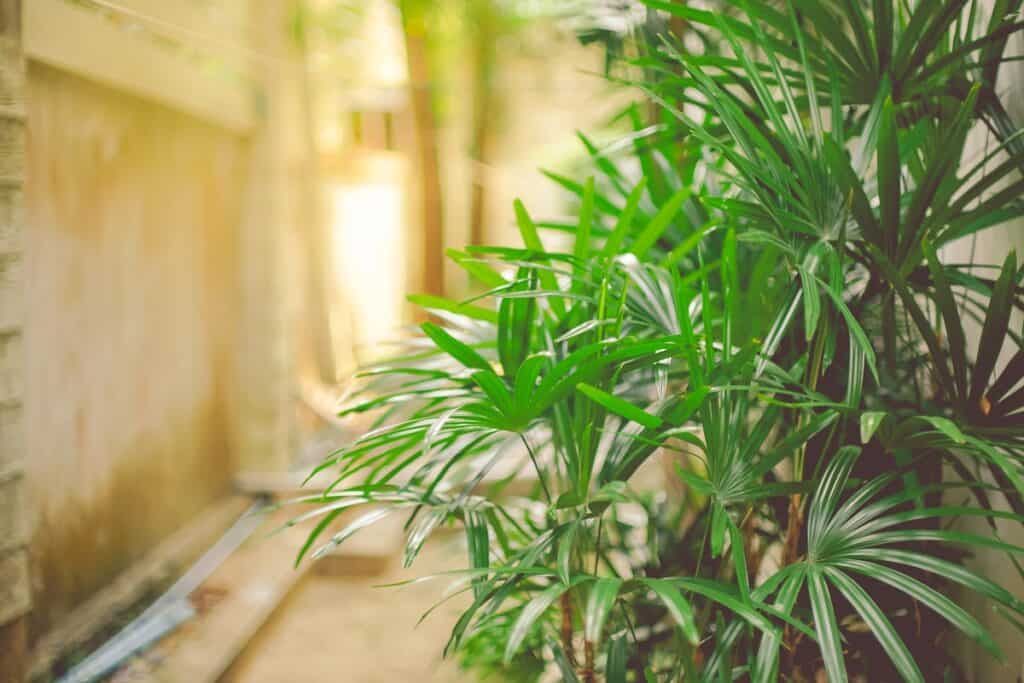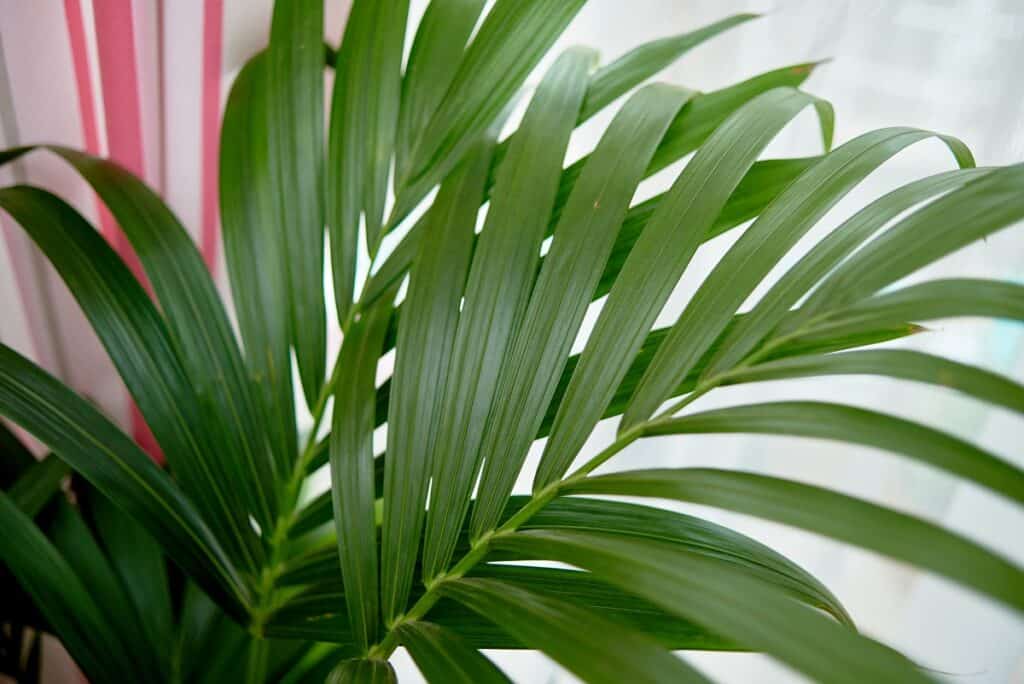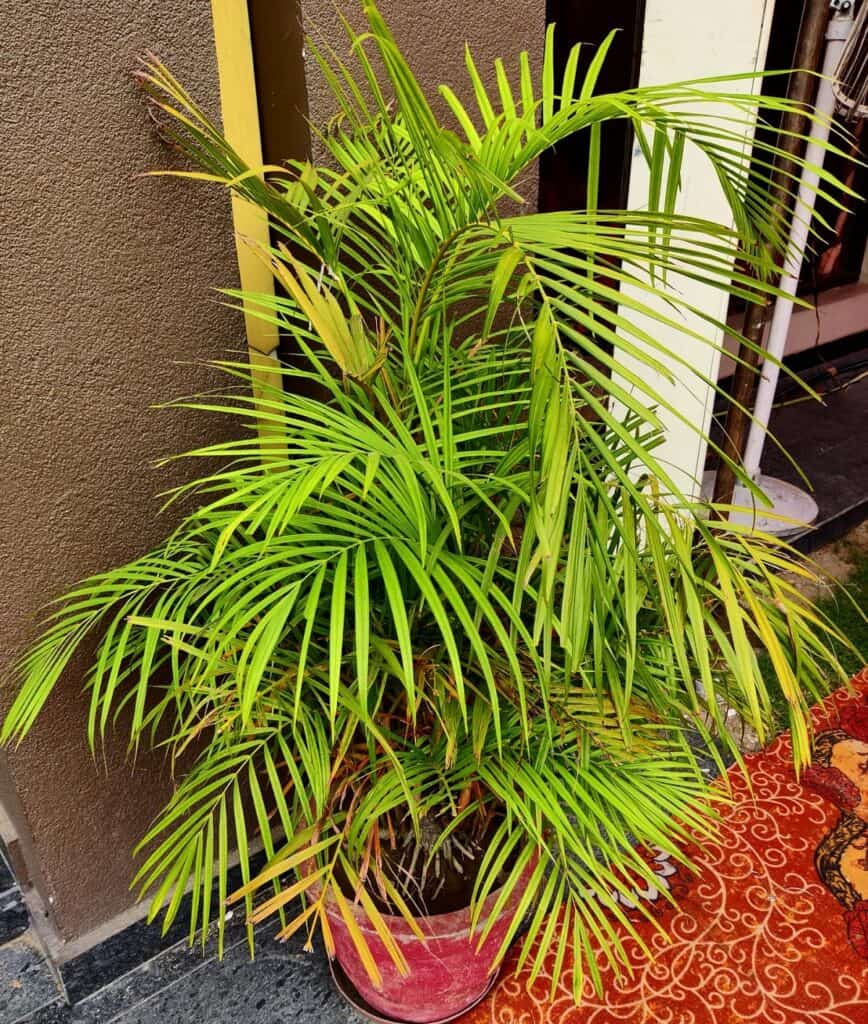Areca palms are a popular decorative plant, often used to add a touch of greenery to the home or office. But like other plants, they need to be taken care of in order to keep them looking their best. Trimming an Areca palm is not a difficult task, but it should be done with care. If you’ve ever wondered how to trim Areca palm, then this article will show you how!
The first step in trimming an Areca palm is to identify the oldest fronds. These are the fronds that are closest to the base of the plant, and they are usually yellow or brown. These should be trimmed carefully and slowly, taking into account the size of the fronds and the shape of the plant. It’s important to be careful when trimming the Areca palm, as any damage can be irreversible.

How To Trim Areca Palm
1. Choosing The Right Tools
Choosing the right tools is essential when trimming an Areca palm. The right tools will make the job easier and help you achieve the desired look for your Areca palm.
When it comes to selecting the right tools, the most important tool you will need is a pair of sharp pruning shears. Pruning shears come in many different sizes and shapes, so make sure you select a pair that is comfortable for you to use. You will also want to make sure the pruning shears are properly sharpened so that you can easily cut through the Areca palm’s thick leaves.
In addition to pruning shears, you may want to consider using a pair of loppers for larger branches. Loppers are similar to pruning shears, but they are longer and have longer blades, making them ideal for cutting through thicker branches.
Finally, you may want to consider using a pole pruner for reaching higher branches. A pole pruner is a long pole with a cutting blade at the end that can be used to reach higher branches and trim them safely.
2. Establishing A Trimming Schedule
Establishing a trimming schedule for your areca palm is an important part of the process to keep your plant healthy and looking its best. Areca palms are typically slow-growing, so you don’t have to worry about trimming too often. However, regular trimming can help your areca palm stay healthy and look attractive.
For most areca palms, trimming should be done every 6-8 weeks. During this time, you can remove any dead or damaged leaves, as well as any yellowing or browning leaves. This will help promote healthy growth and keep the plant looking its best. It’s also important to trim off any flowers or seed pods that may be forming, as this can cause the plant to become top-heavy and potentially fall over.
When trimming your areca palm, use sharp, clean shears so you can make precise cuts. Make sure to trim the leaves at the base of the stem, and avoid cutting into the stem itself. This can cause damage to the plant and potentially harm its growth.
Finally, it’s important to remember that trimming your areca palm is not a one-time event. Establishing a regular trimming schedule is the best way to keep your areca palm healthy and looking its best. By trimming regularly and following the other steps in the trimming process, you can ensure your areca palm stays healthy and vibrant for many years to come.
3. Identifying When To Trim
When it comes to trimming an areca palm, it is important to identify when it is necessary to do so. Generally, an areca palm should be trimmed if it is starting to look overgrown, or if it is developing a lopsided shape.
Additionally, if the areca palm is starting to look unkempt or is no longer maintaining its desired shape, then that may also be a sign that it is time to trim. It is important to keep an eye on the fronds and make sure they are not becoming too thick or growing too close together. If this is happening, then it is time to trim.
If the areca palm is growing outside, then it is important to pay attention to the weather. If a storm is approaching, then it may be best to wait until after the storm has passed before trimming, as the added wind and rain could damage the palm.

4. Removing Old Growth
Removing old growth from an Areca Palm is an important part of keeping the plant healthy. Old growth can be identified by the yellowing of the fronds and the formation of seed pods. These fronds should be removed to promote new growth and keep the plant looking its best.
To remove old growth, gently grasp the yellowed frond near the base of the trunk and pull it off. If the frond is particularly large, it may need to be cut with pruning shears. It is important to take care not to damage the trunk or other fronds while removing the old growth.
Once the old growth has been removed, it is important to dispose of it properly. The fronds should be placed in a compost bin or in a plastic bag before being thrown away. This will keep the plant from becoming infested with pests or diseases from the old growth.
Removing old growth from an Areca Palm is an important part of keeping it healthy and looking its best. Careful and gentle removal of the old fronds will help promote new growth and keep the plant beautiful. Proper disposal of the old fronds is also important to prevent pests and diseases from spreading.
5. Trimming New Growth
New growth is one of the most important aspects of trimming an areca palm. It is the process of removing dead or damaged fronds, as well as encouraging the new growth of healthy leaves. Trimming new growth is important for the overall health and beauty of the areca palm.
When trimming new growth, it is important to take into account the general size and shape of the palm. If the palm is too large, it may be necessary to remove some of the new growth to keep it from becoming top-heavy. This can be done by cutting off the top of the frond, or simply pruning the frond down to the desired size.
It is also important to keep in mind the overall look of the palm when trimming new growth. For example, if the palm has a symmetrical shape, it may be necessary to trim some of the new growth to keep it looking even. If the palm has an asymmetrical shape, on the other hand, some of the new growth may be left intact in order to maintain the desired shape.
Finally, it is important to be careful when trimming new growth. New growth can be fragile, so it is important to use sharp scissors or pruners in order to avoid damaging the fronds. It is also important to avoid trimming too much new growth, as this can slow down the overall growth of the palm.
6. Pruning The Fronds
Pruning the fronds of an Areca Palm is an important step in the trimming process. The fronds are the individual leaves that make up the palm, and they often need to be trimmed to keep the plant looking healthy and neat. Pruning the fronds is a relatively simple process, but it should be done carefully to ensure that the palm’s overall shape and structure is preserved.
To begin pruning the fronds, start by assessing the overall shape of the palm. Note any fronds that are yellowing or discolored, as these should be removed first. Once you have identified the fronds to be removed, use sharp pruners or scissors to carefully cut them off at the base of the stem. Be sure to cut close to the stem, as this will help to ensure that the cut is clean and neat.
Next, inspect the remaining fronds, looking for any that are dead, damaged, or diseased. These should also be removed, as they can detract from the overall appearance of the palm. Use the same cutting method as before, ensuring that the cut is close to the stem so that it looks neat.
Finally, trim any fronds that are overly long or unkempt. The length of the fronds should be kept in proportion to the overall shape of the palm. Trim the fronds in small increments, as too much trimming at once can leave the palm looking lopsided. Once all of the fronds have been pruned, the Areca Palm should look neat and attractive.

7. Disposing Of Clippings
When trimming an Areca palm, it is important to properly dispose of the clippings. The clippings from the Areca palm can be used in a few different ways.
One way to dispose of the clippings is to add them to a compost pile. If done properly, the clippings can easily break down and be used as a natural fertilizer for other plants. This is an environmentally friendly way to get rid of the clippings.
The clippings can also be used as mulch. This is especially beneficial if the clippings are coarse in texture. Mulch helps to keep the soil moist and can also help to insulate the soil, which is beneficial in hotter climates.
The clippings can also be discarded in the trash. While this isn’t the most eco-friendly option, it is the most convenient. If you choose this option, make sure to double-bag the clippings and discard them in a sealed trash can. This will help to keep your home and yard free of debris.
Frequently Asked Questions

How Often Should An Areca Palm Be Trimmed?
Areca palms are a type of tropical plant that are popular for their lush foliage and are often used to add a tropical feel to a home or garden. While these plants are often easy to care for, they do need to be trimmed regularly to keep them healthy and looking their best. The frequency of trimming an Areca palm will depend on a few factors, including the size of the plant and the desired shape.
When trimming an Areca palm, the general rule of thumb is to do it once every three to four months. This frequency should be sufficient to keep the plant looking neat and healthy, and it will prevent the palm from getting too large or out of shape. It is important to remember that trimming is not a substitute for proper watering and fertilizing. An Areca palm should be watered and fertilized regularly, even if it is trimmed regularly.
How Do I Know When An Areca Palm Needs To Be Trimmed?
Knowing when an Areca Palm needs to be trimmed is essential for keeping it healthy and lush. This type of palm tree is highly susceptible to disease and pest infestations if not properly maintained, so regularly trimming it is important.
The most obvious sign that an Areca Palm needs to be trimmed is when it begins to look unkempt and overgrown. If the fronds of the palm are looking brown, yellow, or wilted, or if they are growing in an unbalanced manner, it’s time to trim. Additionally, if a palm tree is growing too long and becoming top-heavy, it’s time to prune it back.
Another way to tell if an Areca Palm needs trimming is if it’s suffering from pest infestations or disease. If the palm has become infested with insects or other pests, or if it’s showing signs of disease, such as spots on the leaves or fronds, it’s time to trim it back. Trimming the palm can help reduce the spread of pests or diseases and keep it healthy.
Finally, if the Areca Palm is growing too close to windows, sidewalks, or other structures, it may need to be trimmed back to prevent it from becoming a hazard. Regularly trimming the palm can help keep it away from structures, which is important for safety.
What Is The Best Time Of Year To Trim An Areca Palm?
Trimming an Areca Palm is an important part of keeping this type of palm tree healthy and looking its best. Deciding the best time of year to trim an Areca Palm is important to ensure that the tree remains healthy and vibrant.
The ideal time to trim an Areca Palm is late spring or summer. During this time, the tree has already put on a full season of growth and is in the process of preparing for the fall. The warm weather of late spring and summer will help to encourage new growth and reduce stress on the tree as it is being trimmed. This will also help to reduce the risk of shock to the tree which can occur during trimming.
It is important to avoid trimming an Areca Palm in the winter months as this can be detrimental to the health of the tree. The cold weather can cause the tree to go into shock and result in damage to the leaves and branches. Additionally, the days are shorter during the winter months and this can reduce the amount of sunlight and nutrients that the tree is able to absorb.

What Should I Do With The Trimmings After Trimming An Areca Palm?
After trimming an Areca palm, it is important to properly dispose of the trimmings. Depending on the size of the trimmings, there are several methods that can be used to get rid of them.
The first option is to compost the trimmings. This is a great way to recycle the trimmings and turn them into something useful. Simply place the trimmings in a compost bin and let them decompose naturally. Once the compost is ready, it can be used as a nutrient-rich fertilizer for other plants.
The second option is to place the trimmings in a hefty trash bag and dispose of them in the garbage. This is a good option if the trimmings are too large to compost, or if you don’t have a compost bin. However, this option should be used as a last resort, as the trimmings could end up in a landfill instead of being recycled.
The third option is to give the trimmings away. If you have friends or family with a garden, they may be glad to take the trimmings off your hands. This is a great way to recycle the trimmings and help someone else out in the process.
No matter which method you choose, it is important to dispose of the trimmings properly. This will ensure that the Areca palm remains healthy and continues to thrive.
Conclusion
In conclusion, trimming an Areca palm is an easy, rewarding task that can help keep your plants healthy and looking their best. With proper pruning, your Areca palm can remain beautiful and vibrant for years to come. Trimming is a great way to give your Areca palm a neat and tidy look, and it can also help the plant to grow more vigorously. Taking the time to trim your Areca palm is well worth the effort, and it is sure to be a rewarding experience for all involved.
